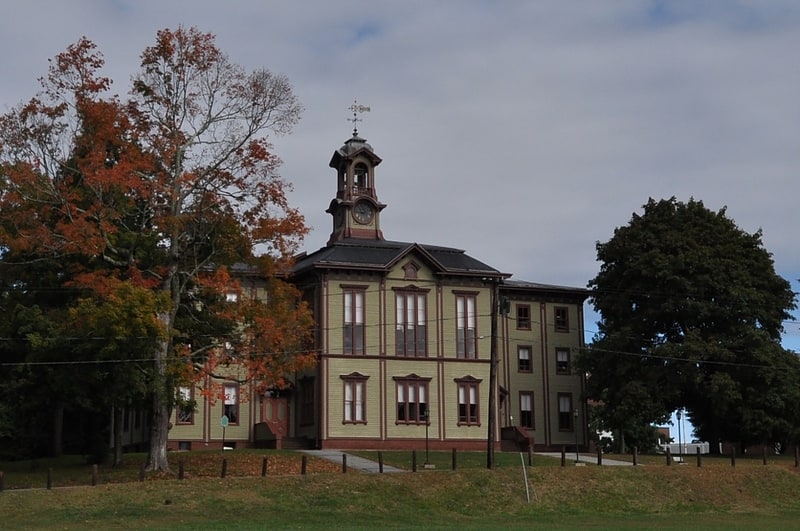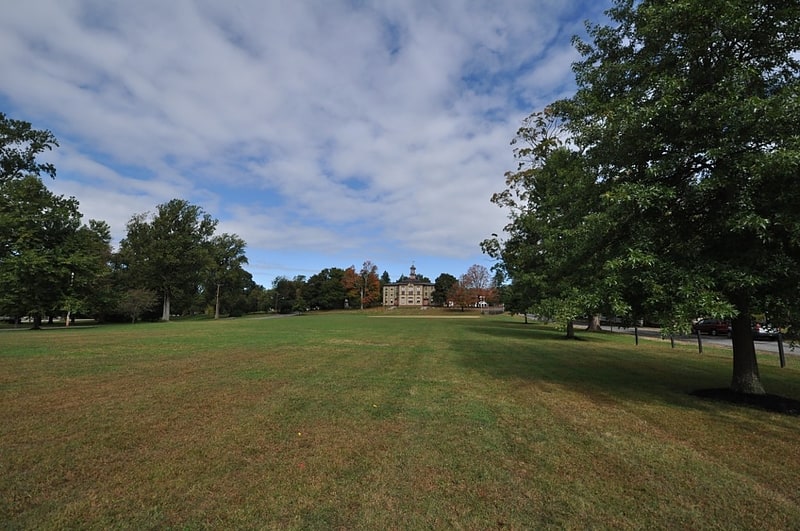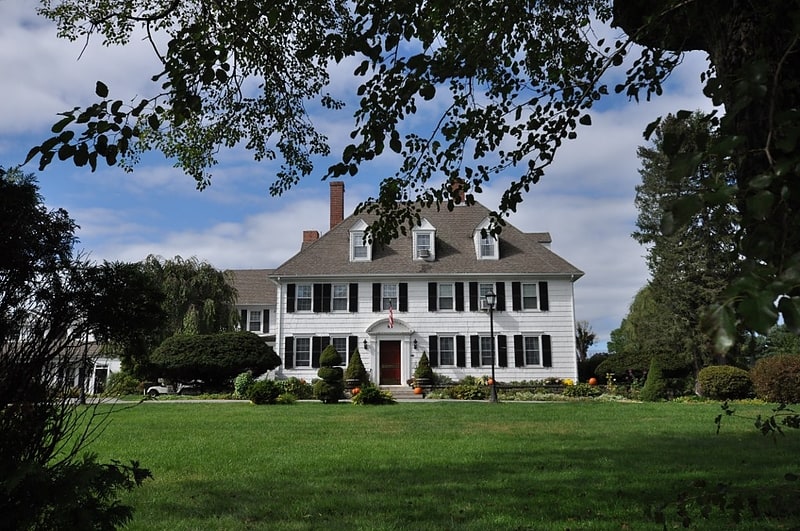Discover 4 hidden attractions, cool sights, and unusual things to do in Woodstock (United States). Don't miss out on these must-see attractions: Roseland Cottage, Woodstock Academy, and Woodstock Hill Historic District. Also, be sure to include Mathew Bowen Homestead in your itinerary.
Below, you can find the list of the most amazing places you should visit in Woodstock (Connecticut).
Table of Contents
Roseland Cottage

Museum in Woodstock, Connecticut. Roseland Cottage, also known as Henry C. Bowen House or as Bowen Cottage, is a historic house located on Route 169 in Woodstock, Connecticut, United States. The house was added to the National Register of Historic Places in 1977, and was declared a National Historic Landmark in 1992. It is described as one of the best-preserved and best-documented Gothic summer houses in the nation, with virtually intact interior decorations.
It is now owned by Historic New England, a non-profit organization that preserves the historical value of the house and operates it as a museum.
Roseland Cottage was built in 1846 in the Gothic Revival style as the summer home of Henry Chandler Bowen and family. The entire complex, with a boxwood parterre garden, an icehouse, garden house, carriage barn, and the nation's oldest surviving indoor bowling alley, reflects the principles of writer and designer Andrew Jackson Downing. In his widely popular books, Downing stressed practicality along with the picturesque, and offered detailed instructions on room function, sanitation, and landscaping.
Beginning in 1870, the largest Fourth of July celebrations in the United States were held at Roseland Cottage. Four United States Presidents visited Bowen's summer home as his guests and speakers for these celebrations: Ulysses S. Grant, Benjamin Harrison, Rutherford B. Hayes, and William McKinley. Other prominent visitors included Henry Ward Beecher, Julia Ward Howe, Oliver Wendell Holmes and John C. Fremont.
Today the house remains in excellent historic condition, with original Gothic furniture and embossed Lincrusta Walton wall decoration. The house, known locally as The Pink House, is currently painted coral pink, and located on Woodstock Hill Common. Roseland's parterre garden contain twenty-one flowerbeds with more than 4,000 annuals bordered in boxwood, in their original 1850 pattern, and now form part of Connecticut's Historic Gardens.
The house is a contributing property within NRHP-listed Woodstock Hill Historic District.[1]
Address: 556 Route 169, 06281-2344 Woodstock
Woodstock Academy

Woodstock Academy, founded in 1801, is a high school located in Woodstock, Connecticut, United States. The Academy, which describes itself as an independent school, serves residents from the Connecticut towns of Brooklyn, Canterbury, Eastford, Pomfret, Union, and Woodstock. The respective towns' taxpayers pay student tuition through municipal taxes, and therefore state agencies and the National Center for Education Statistics categorize Woodstock as a public school. The school also accepts tuition-paying students from surrounding towns and states as day students, and students from around the country and the world as residential students.[2]
Address: 57 Academy RD, Woodstock
Woodstock Hill Historic District

The Woodstock Hill Historic District is a historic district encompassing the historic village center of Woodstock, Connecticut. It is centered on the Woodstock Green, extending south from there toward the junction of Connecticut Route 169 and Plaine Hill Road. Major buildings in the district include the 1821 Congregational Church, the buildings of Woodstock Academy, and Roseland Cottage, a National Historic Landmark that is one of the nation's finest Gothic Revival summer houses. The district was listed on the National Register of Historic Places in 1999.
Woodstock was settled in 1686 by English colonists from Roxbury in the Massachusetts Bay Colony, and was known as New Roxbury until 1690, when it was incorporated as Woodstock. The early settlers occupied the ridge along which Plain Ridge Road now runs, and the area now occupied by the green, Congregational church, and adjacent cemetery were set aside for those purposes by the first arrivals. The present church is the third to stand on the site; the first was completed in 1691. Woodstock Academy was founded in 1802, and the town center benefited from the philanthropy of Henry Chandler Bowen. Bowen was a descendant of one of the town's first settlers, and was a successful New York businessman. He summered at Roseland Cottage, and was a major philanthropic force in the village in the late 19th century, sponsoring elaborate Fourth of July celebrations, and helping fund the 1873 academy building.[3]
Mathew Bowen Homestead

The Matthew Bowen Homestead, also once known as the Plaine Hill Farm, is a historic house at 94 Plaine Hill Road in Woodstock, Connecticut. It is now the Inn at Woodstock. Built in 1816, it is a prominent and well-preserved example of a Federal period farmstead, with a long history of association with the locally prominent Bowen family. The property was listed on the National Register of Historic Places in 1987.[4]